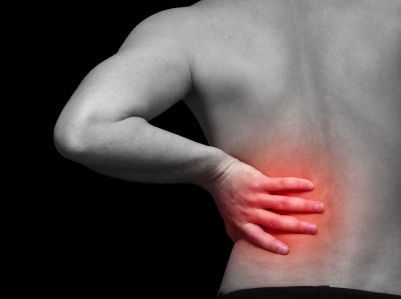
I Have Bursitis, Can Chiropractic Help?
Bursitis is one of the most common causes of shoulder pain that we see in patients. Simply put, it’s the inflammation of a fluid filled sac, or bursa – which lies in between the tendon and the skin, or in between the tendon and the bone. When working normally, the bursa protects the joint and helps to make the movements smooth or fluid.
Treatment
The treatments associated with many shoulder ailments is relatively the same. If you have been diagnosed with bursitis, the muscle imbalances that develop because of the compensating due to pain will restrict shoulder mobility.

A combination of mobilization modalities for the soft tissue and spinal adjustments will restore the mobility to the shoulder joints and can correct any subluxations in the spine. In some cases, we will recommend special rehabilitation exercises to ensure your recovery.
They Usually Aren’t Sports Related
Shoulder injuries can happen at any age and aren’t always necessarily sports related. In fact, many of the cases aren’t even shoulder related, but are related to daily poor posture – all of the sitting, slouching, leaning forward, staring down at cell phones, and lack of exercise are huge contributors to developing shoulder pain.
The key here is to find the root cause of the shoulder pain so it can be treated efficiently. There are a series of movement tests we can conduct to see exactly where your body needs help and to address the problem. If the pain is resulting from a problem in the midback and neck, then adjustments, and stability tape can help. The length of the treatment will always depend on the severity of the problem.
If the pain can be traced back to a sports injury or a specific event, treatments specific to the type of injury will depend on how long you’ve gone without treatment and what kind of physical shape you are already in. A combination of light exercise, adjustments, and stability tape will also be the top treatment choices in this case.
Is Your Day Job Causing You Back Pain?
It’s no secret that as a society, we have become more sedentary at many of our jobs. Gone are the days of getting up and moving repeatedly to file items, to retrieve files, to answer phone, and the list goes on.
 The introduction of computers has simplified our lives on many levels but has taken a toll on our physicality.
The introduction of computers has simplified our lives on many levels but has taken a toll on our physicality.
The number of hours a day you sit at a desk typing has a significant toll on your back. It doesn’t matter how ergonomic your chair is, how much you spent on your desk because it’s the “perfect height”, or what kind of stool you have for your feet – if you don’t exercise your back regularly, you will begin to feel the effects of your desk job.
Of the millions of people who spend at least 7-8 hours a day sitting at a desk, most are sitting incorrectly.
But … I Have to Work
I’m not suggesting you don’t work, but I am suggesting you take a really serious look at your routine while you are working; along with the amount of exercise you are willing to fit into your schedule. The more stable and strong your back remains (and ultimately your core), the better every other aspect of your body functions.
Your spine and your surrounding tissue, muscle, ligaments, and nervous system are all pieces of your healthy framework. The healthier your framework, the better your body feels and works.
6 Things You Can Do to Prevent Damage
- Do not cross your legs while sitting. Women have been taught to believe that this is the polite way to sit. Men have been taught that crossed legs and a straight back will make you look more confident. The truth is, crossing your legs is a habit that is not conducive to correct posture or great alignment. Your ankles should be in front of your knees, and the backs of your knees should not be resting on your chair.
- Keep your shoulders back, and do not allow your abdomen to push out. If you do not have a strong core, this can be difficult. But as long as you are mindful and correcting yourself, sitting properly will help to strengthen those muscles.
- This could be a long-shot, but if you can switch your chair for an exercise ball…..this is a great way to remain aware of your posture and strengthen your core while you work.
- Get up and move. Every hour, you should at least get up and stretch – or even better, take a walk around and grab a drink of water. And if you can, ideally do some back exercises to get your blood flowing.
- Try not to lean forward to get closer to your computer screen. This motion puts added strain on your back and your organs.
- Get regular Chiropractic appointments! You will walk away with the tools you need to ensure you aren’t causing further damage to your back or organs while you work.
We Want You to Be Healthy
The bottom line is, you want to be and do your best at work. If your back and shoulders are sore, if you are getting headaches, if you aren’t sleeping well because of aches and pains – then you aren’t going to be able to be as efficient throughout the day.
The goal here is to make the best with what you have, reduce the amount of medications you take, and to keep your body strong and functional. Our goal as your Chiropractor is to give you the tools you need to follow through.
How to Avoid The Winter Blues
Winter has arrived, and for some people this means blankets, hot chocolate, movies, and outdoor winter activities – but for others, the shorter days and lack of exposure to sunlight can leave them feeling down, or even depressed.
Why Does the Winter Affect Some People Negatively?
Those gray days can have a physiological effect on your body’s ability to produce serotonin and melatonin. This can leave you feeling fatigued, unmotivated, and create difficulties with focus.
This interruption in ‘feel good’ receptors in your body can be mild or severe – leaving some feeling low energy, while for others it can be debilitating.
So What Can You Do About it?
Decreasing stress when at all possible is the first step. Stress can cause all kinds of ailments any time of the year, but is particularly difficult to deal with when your mood is low. Stress increases cortisol levels, and will in turn reduce those ‘feel good’ hormones you will need to get through the next few months.
 Maintain some level of physical activity. If you already work out, ensuring you maintain or increase your trips to the gym will help you to improve your mood. It’s no secret that physical activity is one of the best things you can do for your mental health.
Maintain some level of physical activity. If you already work out, ensuring you maintain or increase your trips to the gym will help you to improve your mood. It’s no secret that physical activity is one of the best things you can do for your mental health.
Get outside. Which I know can be difficult if you aren’t a lover of the cold temperatures. But finding an outdoor activity you can enjoy like skiing or skating, tubing, or visiting outdoor markets will all help you get as much exposure to whatever sunlight you can. Not just that, but being out and social is sometimes all you need to feel good.
Make some adjustments to your diet. It’s so easy to fall into winter indulgences when you feel stuck inside. Not to mention that it can be really hard to get back on track if you have overindulged over the holidays. All of that sugar, processed foods, alcohol, and overeating in general can wreak havoc on your body and your mood. Try sticking with a diet that is rich in real foods, anything processed or deep fried should be avoided. Give your body a break from alcohol and sugary drinks, and fill up on water. If you’re up for it, completing a cleanse with some guidance, may help you reset your digestive system and make you feel lighter.
Take your vitamins. Vitamins and supplements can be really helpful when it comes to improving your overall health, but most people become deficient in vitamin D over the winter months. This is because our bodies make vitamin D with sun exposure, so the lack of exposure causes a drastic decrease in our bodies vitamin D levels.
If you feel a dramatic change in your mood over the winter months, or are having a difficult time with your regular regimen of work, school, relationships etc – then you really should see your medical doctor to ensure there isn’t a bigger problem developing. Many people suffer from SAD (seasonal affective disorder) and although all of the tips presented here, it’s important to ensure you are being followed by a medical professional when your mental health is declining.
If you already see a Chiropractor, continue to see them regularly for care. If not, call us – some simple spinal adjustments, exercises, and nutritional support can make a world of difference in how you feel both physically and mentally – not just through the winter months but all year long!
